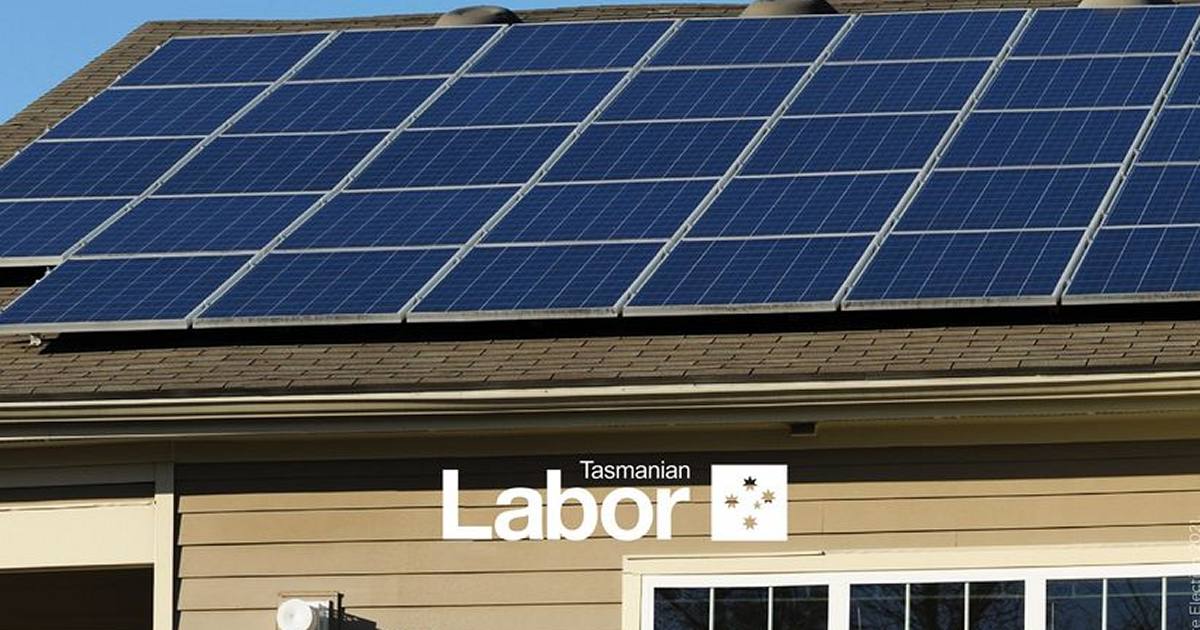
Solar power is a winner – and Tasmanian Labor is using the passion for PV to try and win over voters when Tasmanians go to the polls on May 1.
Tasmania has done pretty well under the current government on the renewable energy front, reaching 100 per cent last year. But much of that is thanks to wind and hydro energy.
Solar power is still a bit player and there are no big solar farms in Tasmania – the largest system I could find in the state is SRT Logistics’ 584kW installation in Devonport.
Uptake of small-scale solar systems also lags behind the other states. The Australian Photovoltaic Institute puts the estimated percentage of dwellings with PV systems in Tasmania at 16.7%. As at the end of February this year, around 40,300 sub-100kW systems had been installed across the state.
The lower uptake is due in part to higher system prices and less energy output compared to other states. SQ’s Ronald recently wrote about how to succeed with solar in Tasmania and SolarQuotes founder Finn has created a video on everything Tasmanians need to know before they get quotes for a solar power system (added – text version of the Solar 101 Tasmanian Edition is here).
TAS Labor – Solar And Battery Loans
Yesterday Tasmanian Labor announced that if it gains power, it will provide $20 million to fund loans of up to $15,000 for households and businesses to buy batteries or solar systems. Tasmanian Labor Leader Rebecca White said the loans would be over ten years and interest free for the first three years, then low interest for the remaining seven. How low wasn’t mentioned.
A good chunk of the announcement was focused on dissing Premier Peter Gutwein and the Liberals, so there isn’t a lot of added detail, but Ms. White made this curious comment:
“Battery storage is the equivalent of receiving a feed-in tariff equal to the retail rate charged by Aurora.”
What needs to be kept in mind is the battery owner is foregoing the feed-in tariff by storing the surplus solar energy and has to outlay many thousands of dollars on a battery system – and this needs to be factored in when calculating returns. While low feed-in tariffs improve the economics of batteries, this doesn’t necessarily make them financially worthwhile. Try SQ’s solar and battery calculator to see for yourself.
But as Finn mentions in the video above, where batteries can make financial sense in Tasmania is in situations where mains power would otherwise need to be brought to a block; which can be incredibly expensive.
What certainly makes financial sense for many already grid-connected households and businesses is installing solar panels; approaching it in the way Finn and Ronald recommend.
Solar For Schools And Social Housing
On Monday, Ms.White also pledged a Labor Government in Tasmania will create a $5 million Solar Schools Fund.
“An important element of Labor’s policy is that schools will be able to retain their savings as an incentive instead of having to return this money to the department, which is the current Liberal policy.”
Labor says each school could save around $22,000 a year on electricity costs, money that could be put back into improving learning outcomes.
Also previously announced is a $17.5 million fund for installing solar panels, heat pumps and addressing the maintenance backlog in public housing.
Monday’s and yesterday’s announcements also repeated accusations the Liberals will “carve up and privatise” Hydro Tasmania and that will lead to higher electricity prices. Premier Peter Gutwein has previously stated “we will not sell Hydro Tasmania under any circumstances,” but the sale of Momentum Energy – which is owned by Hydro Tasmania – is a possibility.
Related: Home Solar Power In Tasmania

 RSS - Posts
RSS - Posts



Interesting, the difference between the ACT Labor and the Tasmanian Labor, in this regard.
The ASCT Labor offered $15,000 interest free over ten years.
The Commonwealth Bank offer to their mortgage customers, as mentioned at
https://www.solarquotes.com.au/blog/commbank-solar-loan-mb1881/
”
CBA, Commbank, Commonwealth Bank of Australia or whatever you want to call it has announced an upcoming very low interest green loan that can be used to finance the purchase of a solar power system.
The CommBank Green Loan will be available to Commonwealth Bank home loan customers to purchase and install renewable energy technology such as solar panels, battery systems and electric vehicle chargers at the property used as security for the existing home loan.
“The CommBank Green Loan offers an historically low 0.99% p.a. secured fixed rate loan for eligible CommBank customers to fund up to $20,000 in renewables repaid over 10 years with no set up, monthly service or early repayment charges, adding to our already market leading home lending solutions,” said Group Executive Angus Sullivan.
”
sounds (to me) even better.
Perhaps, if the state/territory ALP parties simply offered to match the Commonwealth bank offer, but, to make it available to all owner/occupier households with incomes in the lower 75% of household incomes, it would be good.
And, of course, here in WA, where the WA ALP state government is owned by the fossil fuel companies, the state ALP government policy is “Burn more fossil fuels – nobody needs a future”. Unforttunately, the WA state government has made vehemently clear, its opposition to the use of clean energy in WA.
A suggestion for the blog; on the right hand side of the web pages, is a section with the heading “Topics” – how about adding a new topic (and, including links to all existing, applicable articles), with the name “Finance”?
I note that, in using the blog search facility with the search term “Loans”, it did not return, in the results, the article that I cited above, about the Commonwealth Bank offer to its mortgagees.